Poveglia Island’s dark history makes it one of the world’s most haunted places. You can explore its military past, where it served as a fortress, and later, a grim quarantine station for plague victims. The island also housed a notorious asylum known for its cruel treatment of mentally ill patients. With its eerie legends and ghostly encounters, Poveglia captivates the imagination, beckoning you to uncover the chilling tales behind its haunting reputation.
Key Takeaways
- Poveglia Island has a dark history as a quarantine station for plague victims, leading to mass graves and haunting tales.
- The island served as an asylum where patients suffered inhumane treatments, contributing to its ghostly reputation.
- Its long periods of abandonment and eerie atmosphere enhance the feeling of it being cursed or haunted.
- Legends and stories of ghostly encounters have made Poveglia a subject of fascination and fear.
- Restricted access to the island adds to its mystique, drawing thrill-seekers intrigued by its haunted past.
A Glimpse Into Poveglia’s Historical Significance
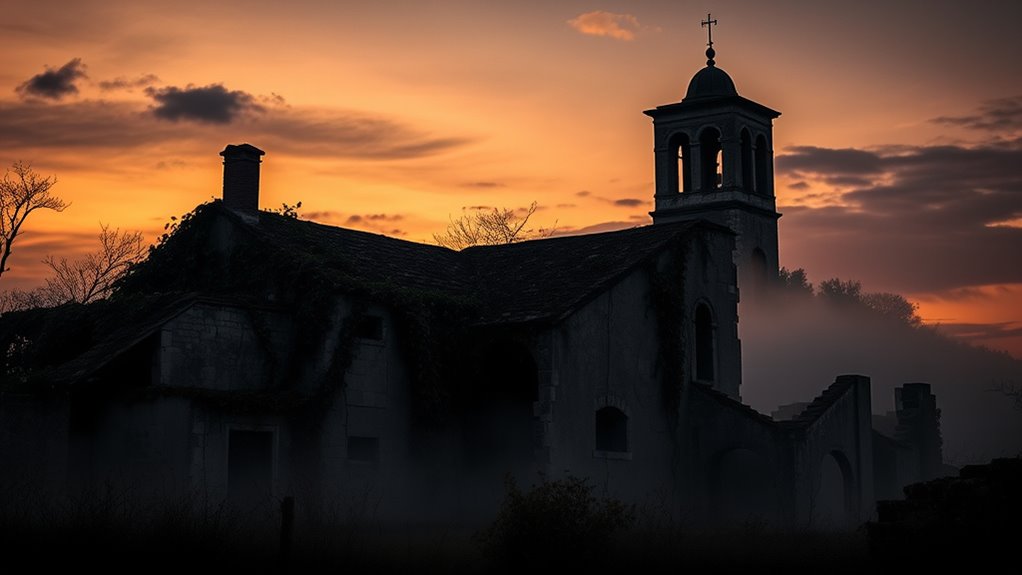
Although often shrouded in mystery and fear, Poveglia Island has a rich historical significance that dates back to its early settlement in 421 AD.
You’ll find that it was one of the first settlements in the Venetian lagoon, where people fleeing barbarian invasions sought refuge. By the 9th century, the island’s population grew, and it gained importance under a dedicated Podestà.
One of the earliest havens in the Venetian lagoon, Poveglia provided refuge from barbarian invasions and flourished under its Podestà.
A notable event occurred around 864 when two hundred slaves of a slain doge found sanctuary there.
Despite its potential, the island faced periods of abandonment, especially after the Camaldolese monks declined an offer to settle in 1527.
This rejection marked a turning point in Poveglia’s history, setting the stage for its later, darker uses.
The Island’s Role in Military Defense
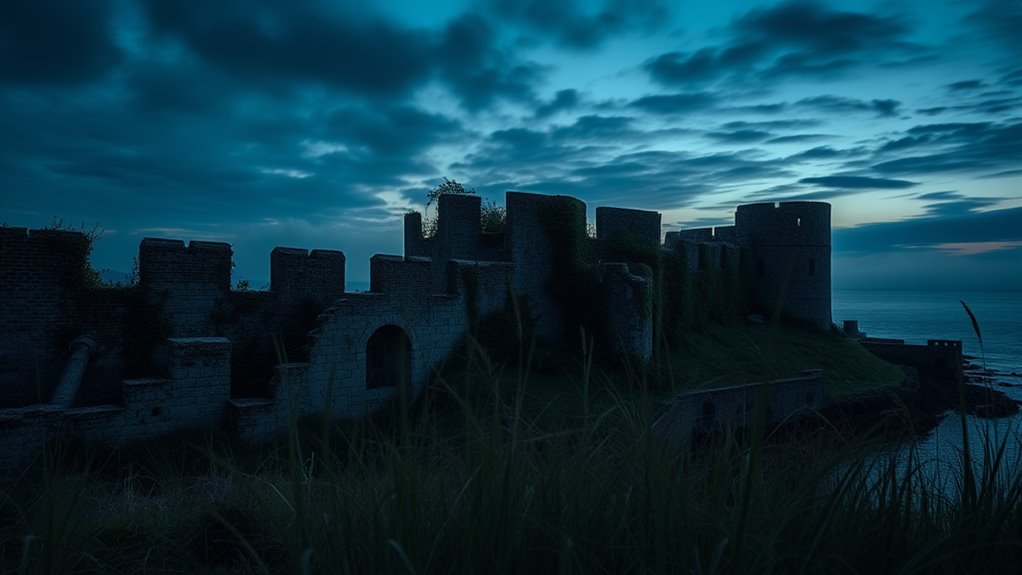
As Poveglia Island’s strategic position emerged, it became an essential component of Venice’s military defense system. First mentioned in 421, it gained significance as its population grew, especially after the Venetian Republic acquired it in 1379.
By the 14th century, a fort was built to deter maritime threats, housing artillery vital for defending against naval sieges. Poveglia’s location allowed it to monitor key lagoon entrances, complementing other forts like Sant’Andrea.
This integration into a larger defensive network, featuring octagonal forts and batteries, was critical for Venice’s security. Though the island saw minimal direct conflict, it served as a last line of defense, ensuring the city’s safety from potential invaders throughout its military history.
Quarantine Station: The Plague’s Dark Legacy
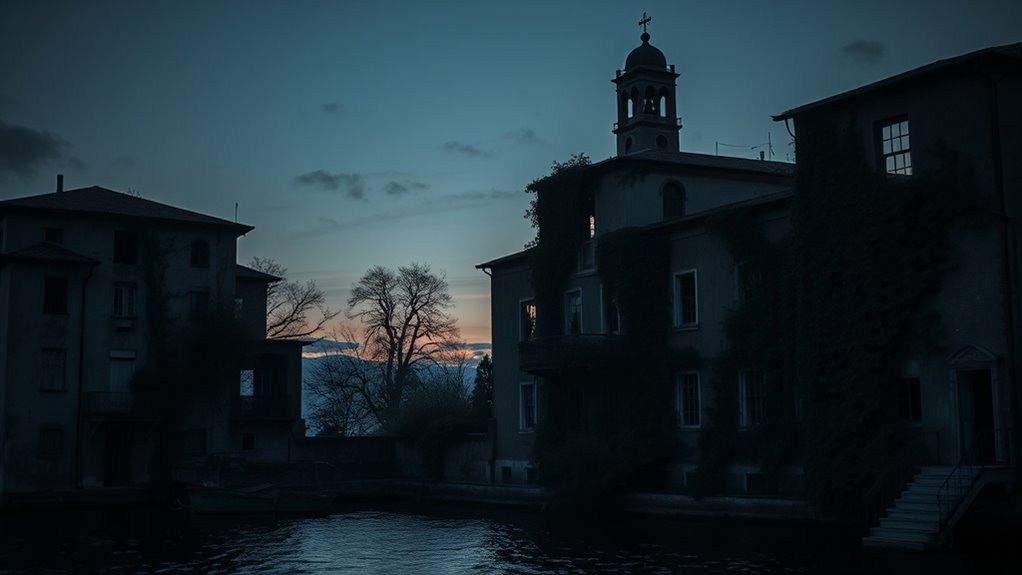
Poveglia Island’s transformation into a quarantine station in 1776 marked a grim chapter in its history, where it became an essential line of defense against the plague and other diseases.
It served as a checkpoint for ships arriving in Venice, inspecting sailors for signs of infection. Conditions were often harsh, with overcrowding and poor sanitation leading to high mortality rates.
A grim checkpoint for ships, Poveglia’s overcrowded conditions and poor sanitation led to devastating mortality rates.
In 1793, two infected ships forced to stop at Poveglia intensified its role as a quarantine site. The island also became notorious for mass graves, where plague victims were hastily buried.
This grim legacy of isolation and death shaped Poveglia’s reputation, creating a haunting atmosphere that lingers for both locals and visitors today.
The Asylum Years: Cruelty and Controversy
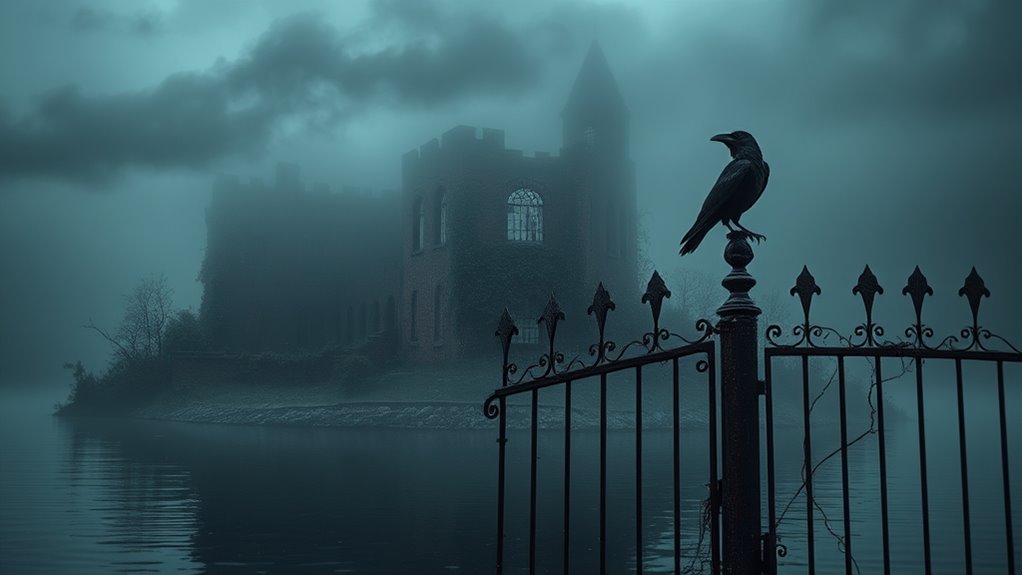
When the asylum was established in 1922, it marked a new and troubling chapter in Poveglia Island’s history.
Initially intended to treat mentally ill patients, the facility quickly gained a reputation for its inhumane practices. You’d find reports of beatings, restraints, and brutal medical procedures performed without any ethical considerations.
Patients suffered in harsh conditions, often neglected and abused by staff who frequently misbehaved. The isolated environment only exacerbated their plight, as resources were scarce and sanitation was non-existent.
This dark legacy reflects a broader societal misunderstanding of mental illness during the early 20th century, cementing Poveglia’s status as a haunting reminder of cruelty and neglect in psychiatric care.
Poveglia Today: Myths, Legends, and Limited Access
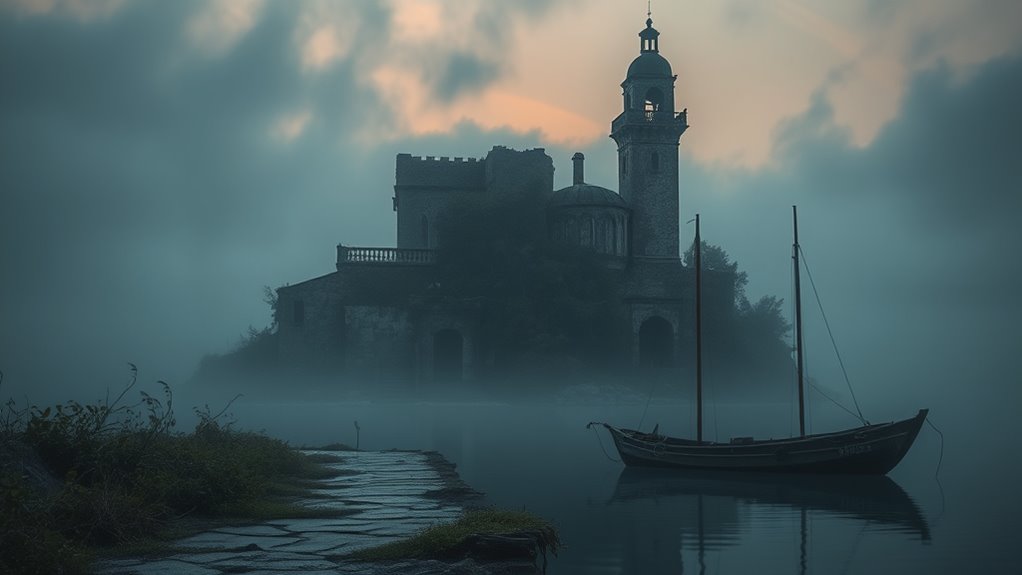
Though many are drawn to Poveglia Island’s eerie allure, accessing this haunted site is no easy feat. Nestled in the Venetian Lagoon, the island remains largely abandoned, shrouded in legends of plague victims and ghostly encounters.
With its cursed ground and dark past as a quarantine station and psychiatric hospital, it’s no wonder visitors claim to hear disembodied screams or feel an unsettling presence. However, it’s illegal to visit without permission, adding to the island’s mystique.
Limited access means fewer documented paranormal experiences, but that hasn’t stopped tourists and enthusiasts from dreaming of exploring its overgrown structures. Poveglia continues to captivate imaginations, a haunting reminder of Venice’s darker history.
Frequently Asked Questions
Are There Any Ghost Tours Available on Poveglia Island?
Yes, there are ghost tours available on Poveglia Island.
These tours usually start from nearby islands in the Venetian lagoon and take you around the island, highlighting its dark history and eerie legends.
While you can’t disembark due to access restrictions, knowledgeable guides share chilling stories about the island’s past.
As you cruise, you’ll feel the anticipation and dread that make Poveglia a fascinating and haunting destination for thrill-seekers.
Can You Camp Overnight on Poveglia Island?
You can’t camp overnight on Poveglia Island. Italian law strictly prohibits unauthorized access, including camping.
Even if you’re intrigued by the island’s mysterious allure, safety concerns about its deteriorating structures and environmental hazards make it a risky choice.
Special permits are rarely granted, and the island’s current state of disrepair means it’s best to admire from a distance.
Exploring its eerie history is fascinating, but respecting the restrictions is essential for everyone’s safety.
What Wildlife Can Be Found on Poveglia Island?
On Poveglia Island, you’ll find a diverse range of wildlife thriving in its protected environment.
Seagulls and herons nest along its shores, while various bird species utilize the island as a resting ground. The absence of human interference allows these creatures to flourish.
However, rising sea levels and pollution pose challenges to their habitats. You can appreciate the island’s ecological significance, knowing it plays an essential role in maintaining biodiversity in the Venice lagoon.
Are There Any Local Legends Specific to Poveglia Island?
Yes, there are chilling local legends specific to Poveglia Island.
You’ll hear tales of the restless spirits of plague victims and former asylum patients, believed to roam the island in anguish. Many locals insist the soil is cursed, haunted by the souls of the deceased.
You might encounter stories about a mysterious bell tower that rings ominously without a clapper, signaling misfortune.
These legends contribute to the island’s eerie reputation and draw curious visitors.
How Can I Obtain Permission to Visit Poveglia Island?
If you want to visit Poveglia Island, you’ll need to navigate some bureaucratic waters.
Start by contacting the local municipality for special permissions, especially if you’re considering filming or research activities.
Be aware that guided tours are currently unavailable, and unauthorized visits can lead to legal trouble.
It’s a process that can take time, so patience is key.
Conclusion
As you wrap up your exploration of Poveglia Island, it’s hard not to feel a chill run down your spine. With over 160,000 people believed to have died there, the island’s haunted reputation is chillingly backed by history. Though it’s now largely off-limits, its dark stories continue to intrigue thrill-seekers and ghost hunters alike. So, if you ever find yourself near Venice, just remember: some places hold more than just echoes of the past.









